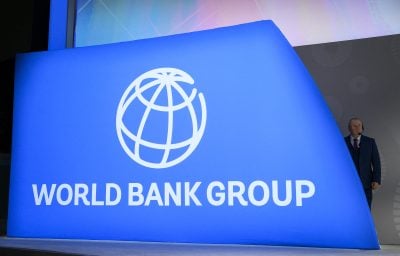Investment banking in Africa is still dominated by multinationals but local players can still play an important role.
Depending on who you speak to – government officials, the International Monetary Fund (IMF), financial institutions and rating agencies – they will usually concur on some of the market dynamics and agree to disagree on others.
The prospects for investment banking in Africa, is no exception. The banking sector in Africa, like elsewhere but perhaps more so than other regions, is beholden to a long list of extraneous, regional and domestic factors including: the state of the global economy; US Fed interest rates; and global commodity prices, given that many African countries are primary minerals producers.
Other factors include: GDP growth dynamics, political stability and quality of governance. But that is not all. The list includes: the health and reach of the financial sector; foreign direct investment attractiveness; exposure to government securities; the presence of a decent capital market architecture complete with legal and regulatory framework, and a relatively sizeable listing regime at the local or regional stock market.
Also factor in the mismanagement at state-owned enterprises and efforts aimed at eradicating state capture and corruption.
Reaping highest rewards
Each African region has its strengths and shortcomings on the one hand and opportunities and potential on the other hand. But those institutions that have the best vision suited to its domestic and regional operating environment, coupled by a commitment to contribute to economic and societal transformation, and which manage costs and customers, investment and corporate risks effectively will continue to reap the highest rewards,
In investment banking this translates into higher fees, commissions and return on equity (ROE). Standard Bank, for instance, expects its ROE range to increase to 18% to 20% over the medium term, but higher than the 17.1% in 2017. Investment banking business in Africa, including South Africa, is a very small part of the global industry.
Take fee income and commissions. According to the latest data for 2017 of Thomson Reuters, buoyed by a recovery in equity issuance, global investment banking fees rose 16% to an estimated $104bn in 2017, the highest level since its records began in 2000.
“The rebound in fees to above pre-crisis highs will be welcome news for global advisors who complain they are being squeezed by regulatory requirements amid competition from boutique players,” said Reuters.
Sub-Saharan Africa investment banking fees reached $527.9m during 2017, 0.1% less than in 2016, with Citibank the biggest earner in Sub-Saharan Africa during 2017, with a total of $43.9m or an 8.3% share of the total fee pool, which includes M&A (mergers and acquisitions), equity capital market (ECM) underwriting, syndicated lending, debt capital market (bond and Sukuk) underwriting.
In general Africa’s rapidly rising economy including its high GDP growth prospects and its improving capital markets architecture, coupled with rising oil prices and easing of drought, augurs well for investment banking prospects. This segment is dominated by the global banking majors such as Morgan Stanley, Goldman Sachs, JP Morgan, Citi and Merrill Lynch Bank of America; and regional giants primarily from South Africa including Investec, Barclays Africa Group and Java Capital.
In the above respect the South African banks, such as the four largest, Standard Bank, First Rand Bank, ABSA and Nedbank, accounting for 82% of total system assets of R5.014trn at end July 2017, are faced with stiff competition in the investment banking business from foreign banks registered primarily in South Africa.
The IMF, in its latest World Economic Outlook update published in July, gave Africa a cautious thumbs up: “The recovery in Sub-Saharan Africa is set to continue, supported by the rise in commodity prices. For the region, growth is expected to increase from 2.8% in 2017 to 3.4% this year, rising further to 3.8% in 2019.
“The upgraded forecast reflects improved prospects for Nigeria’s economy. Its growth is set to increase from 0.8% in 2017 to 2.1% in 2018 and 2.3% in 2019 on the back of an improved outlook for oil prices. Despite the weaker-than-expected first quarter outturn in South Africa, the economy is expected to recover somewhat over the remainder of 2018 and into 2019 as confidence improvements associated with the new leadership are gradually reflected in strengthening private investment.”
In contrast, the international rating agency, Moody’s Investors Service, in its African Banking 2018 Outlook, warns that although banks will maintain solid capital and liquidity buffers, macro conditions will remain difficult in a majority of African countries. Despite improvement, economic growth will remain below historical levels, while political uncertainty will dampen confidence and governments’ capacity for fiscal stimulus will be limited.
According to the authors, led by Moody’s Banking MD, Sean Marion, “macro risk contagion channels for banks include their large holdings of government securities, which link their credit profiles to that of their respective sovereigns; authorities’ reduced capacity to support banks in case of need; and asset quality pressures. South African, Kenyan and Tunisian banks will be most affected by these conditions, while Nigerian, Moroccan and Egyptian banks will fare better.”
Moody’s maintains that improvements in macro-economic and operating conditions leading to the stabilisation of sovereign ratings is a prerequisite for a change in outlook for African banks; and a reduction in nonperforming loan (NPL) levels and further improvements in foreign currency liquidity could lead to a change in its outlook to stable.
But for this to progress to a positive outlook, GDP growth will have to return to pre-crisis levels of between 6-8%, there will have to be structural reforms and fiscal consolidation, driving sovereign ratings higher, and a reversal of deteriorating trends in non-performing loans formation and uninterrupted access to foreign currencies especially for banks and businesses, while maintaining strong capital buffers and healthy earnings.
Arno Daehnke, Group Financial Director of Standard Bank, concurred that the prolonged low-growth environment in South Africa continues to weigh on consumers and businesses. Tax bracket creeps, VAT hikes and, more recently, petrol price increases, he said, have added to this pressure. The outlook remains difficult.
Supportive macro environment
But where Standard Bank has a presence through its Stanbic subsidiaries, the bank’s portfolio as a whole has enjoyed a supportive macro environment and inflation pressures have continued to subside. Interest rates are generally down year-on-year and exchange rates have been less volatile.
“In the West Africa region, a higher oil price is providing support. In Nigeria the introduction of the NAFEX mechanism continues to assist FX liquidity. In Angola, inflation continues to decline, the Kwanza has devalued 25% year to date and rates have been relatively stable. In East Africa, the interest rate caps and floors remain in place in Kenya, impacting asset growth. In South and Central Africa, Mozambique’s currency has remained relatively stable period-on-period. Zimbabwe is due to hold elections at the end of July, which we hope will further stabilise the economy,” he observed.
Looking ahead, there are both negative and positive prospects. These include the impact of the potential introduction of a clause in the South African Constitution (Section 25) to ‘make it possible for the state to expropriate land in the public interest without compensation’.
This, according to Frans Cronje, chief executive of the Institute of Race Relations (IRR), an independent think-tank, “would wipe billions of dollars off the balance sheets of the agricultural economy, place the banking industry at risk, and trigger a sharp withdrawal of fixed investment while driving food prices upwards, provoking urban protest action.”
The appreciation of the Rand against Southern African countries similarly will impact earnings and the cost of finance in these countries, which could put a dampener in market activity. Similarly, despite pressure on margins due to prevailing economic conditions, at least in Southern Africa, Standard Bank is confident that the deal pipeline is rich – subject to the usual caveats.
The increased role of African financial institutions – both private and pan-African ones such as the African Development Bank, Africa Finance Corporation, African Investment Bank – in sub-Saharan African infrastructure financing is further reflected in the growing number and volume of syndicated deals without foreign participation, or where African banks are the lead arrangers of the syndicate.
The investment of China’s ICBC, taking a controlling stake in Standard Bank’s global market business, may be a game changer, suggesting that Standard Bank is looking for opportunities in other markets as opposed to its stated objective of also consolidating its core business in South Africa and its core African operations. And the bank is voting with its money, on course to make a capital injection of $80m in new equity.
Want to continue reading? Subscribe today.
You've read all your free articles for this month! Subscribe now to enjoy full access to our content.
Digital Monthly
£8.00 / month
Receive full unlimited access to our articles, opinions, podcasts and more.
Digital Yearly
£70.00 / year
Our best value offer - save £26 and gain access to all of our digital content for an entire year!
 Sign in with Google
Sign in with Google 


